
Exxon Valdez runs aground on March 24, 1989
Exxon Valdez runs aground: One of the worst oil spills in U.S. territory begins when the supertanker Exxon Valdez, owned and operated by the Exxon Corporation, runs aground on a reef in Prince William Sound in southern Alaska. An estimated 11 million gallons of oil eventually spilled into the water. Attempts to contain the massive spill were unsuccessful, and wind and currents spread the oil more than 100 miles from its source, eventually polluting more than 700 miles of coastline. Hundreds of thousands of birds and animals were adversely affected by the environmental disaster.
It was later revealed that Joseph Hazelwood, the captain of the Valdez, was drinking at the time of the accident and allowed an uncertified officer to steer the massive vessel. In March 1990, Hazelwood was convicted of misdemeanor negligence, fined $50,000, and ordered to perform 1,000 hours of community service. In July 1992, an Alaska court overturned Hazelwood’s conviction, citing a federal statute that grants freedom from prosecution to those who report an oil spill.
Exxon itself was condemned by the National Transportation Safety Board and in early 1991 agreed under pressure from environmental groups to pay a penalty of $100 million and provide $1 billion over a 10-year period for the cost of the cleanup. However, later in the year, both Alaska and Exxon rejected the agreement, and in October 1991 the oil giant settled the matter by paying $25 million, less than 4 percent of the cleanup aid promised by Exxon earlier that year.
History Channel / Wikipedia / Encyclopedia Britannica / EPA.gov / Encyclopedia Britannica / The Atlantic
/ Exxon Valdez runs aground on March 24, 1989 (YouTube) 
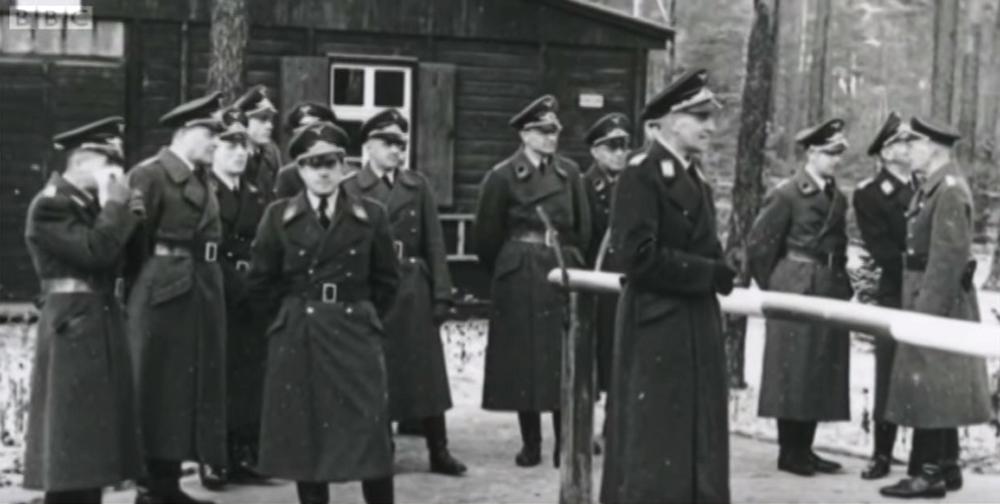
World War II: In an event later dramatized in the movie The Great Escape, 76 Allied prisoners of war begin breaking out of the German camp Stalag Luft III on March 24, 1944
World War II: Remembering ”The Great Escape”, 70 Years Ago: Around 10:30 pm. on the cold, moonless night of March 24, 1944, Johnny Bull slowly peeked his head out of the ground and filled his lungs with freedom as he breathed in the frigid air. The sweat-soaked prisoner of war had just poked away at the last nine inches of grass and dirt atop a vertical shaft at the end of a tunnel that ran more than 30 feet below the oblivious Nazi guards patrolling the Stalag Luft III camp, which held thousands of Allied airmen captured by German forces in World War II.
The flyboys who bravely soared the skies had demonstrated courage and ingenuity below ground as well in toiling for nearly a year to construct a tunnel that would allow them to flee from captivity. The secret plan had been led and organized by Roger Bushell, a Royal Air Force pilot who had been shot down over France while assisting with the evacuation of Dunkirk. After Bushell, nicknamed “Big X,” escaped twice from German prisoner of war camps, he was sent to what the Nazis believed to be one of their most secure facilities—Stalag Luft III. At this camp, 100 miles southeast of Berlin, the Nazis had taken measures to prevent tunneling, such as raising prisoners’ huts off the ground and burying microphones nine feet underground along the camp’s perimeter’s fence. In addition, the camp was built atop sandy ground through which it would be extremely difficult to tunnel. Still, Bushell would not be deterred.
In the spring of 1943, he and others began work on an audacious plan to construct three tunnels with the code names of Tom, Dick and Harry that would stretch over 300 feet to outside the camp’s perimeter fence. Under the rules of engagement of the Geneva Conventions, the penalty for being caught, generally 10 days in solitary confinement, was worth the risk.
Inside Hut 104, the prisoners of war building the Harry tunnel—who included many British airmen as well as Americans, Canadians, Australians, French and other Allied pilots—toiled for days chipping away at the building support columns to avoid being seen working underneath the huts. From a trap door concealed below a heating stove always kept lit to discourage the Nazi guards from getting too close, they burrowed down 30 feet in order to be out of the range of the microphones. Working in claustrophobic conditions, the prisoners excavated 100 tons of sand, which they stuffed bit by bit into concealed socks and discreetly sprinkled into the garden soil being raked by other prisoners. The diggers stripped to their long johns or took off all their clothes so that the bright golden sand wouldn’t stain them and raise the suspicions of the German guards.
The prisoners scavenged and stole materials for the operation. They stripped 4,000 wooden bed boards to build ladders and shore up the sandy walls to prevent collapse. They stuffed 1,700 blankets against the walls to muffle sounds. They converted 1,400 powdered milk tin cans provided by the Red Cross into digging tools and lamps in which wicks fashioned from pajama cords were burned in mutton fat skimmed off the greasy soup they were served. Eventually, some prisoners stole a wire that they then hooked up to the camp’s electrical supply to power a string of light bulbs in the tunnel. They fashioned a crude air pump system built in part with hockey sticks and constructed an underground trolley system pulled by ropes to transport the sand with switchover stations named after two London landmarks—Piccadilly Circus and Leicester Square.
History Channel / Wikipedia / The Telegraph UK / PBS.org NOVA / Imperial War Museums IWM.org UK
/ German camp Stalag Luft III (YouTube) 
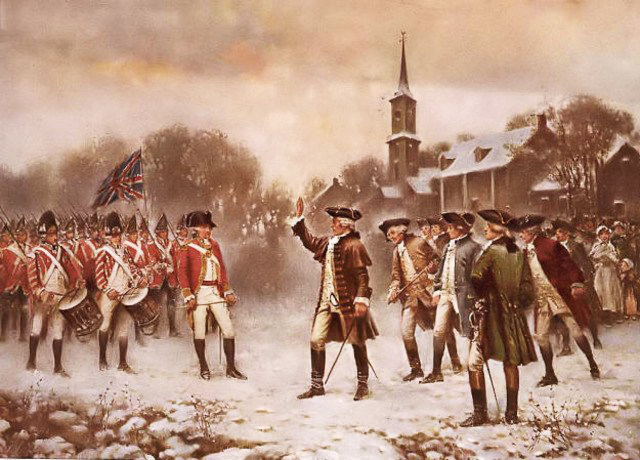
Great Britain Parliament passes the Quartering Act, which requires the Thirteen Colonies to house British troops on March 24, 1765
Great Britain passes the Quartering Act: On this day in 1765, Parliament passes the Quartering Act, outlining the locations and conditions in which British soldiers are to find room and board in the American colonies.
The Quartering Act of 1765 required the colonies to house British soldiers in barracks provided by the colonies. If the barracks were too small to house all the soldiers, then localities were to accommodate the soldiers in local inns, livery stables, ale houses, victualling houses, and the houses of sellers of wine. Should there still be soldiers without accommodation after all such publick houses were filled, the colonies were then required to take, hire and make fit for the reception of his Majesty’s forces, such and so many uninhabited houses, outhouses, barns, or other buildings as shall be necessary.
As the language of the act makes clear, the popular image of Redcoats tossing colonists from their bedchambers in order to move in themselves was not the intent of the law; neither was it the practice. However, the New York colonial assembly disliked being commanded to provide quarter for British troops–they preferred to be asked and then to give their consent, if they were going to have soldiers in their midst at all. Thus, they refused to comply with the law, and in 1767, Parliament passed the New York Restraining Act. The Restraining Act prohibited the royal governor of New York from signing any further legislation until the assembly complied with the Quartering Act.
In New York, the governor managed to convince Parliament that the assembly had complied. In Massachusetts, where barracks already existed on an island from which soldiers had no hope of keeping the peace in a city riled by the Townshend Revenue Acts, British officers followed the Quartering Act’s injunction to quarter their soldiers in public places, not in private homes. Within these constraints, their only option was to pitch tents on Boston Common. The soldiers, living cheek by jowl with riled Patriots, were soon involved in street brawls and then the Boston Massacre of 1770, during which not only five rock-throwing colonial rioters were killed but any residual trust between Bostonians and the resident Redcoats. That breach would never be healed in the New England port city, and the British soldiers stayed in Boston until George Washington drove them out with the Continental Army in 1776.
History CHannel / Wikipedia / Encyclopedia Britannica / Constitution Center.org / Library of Congress / United States History
/ Great Britain Parliament passes the Quartering Act, which requires the Thirteen Colonies to house British troops on March 24, 1765 (YouTube) 
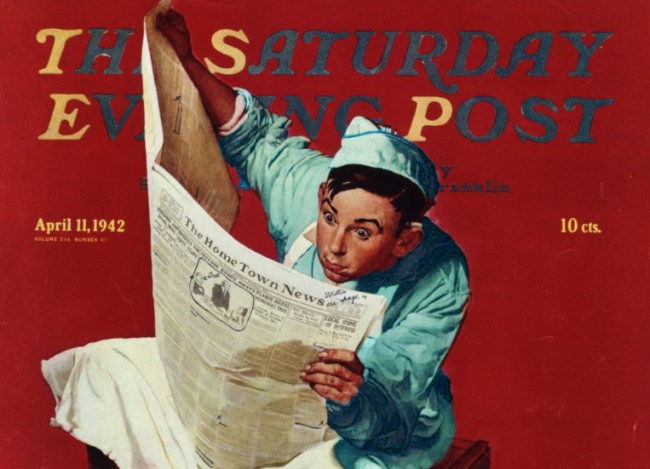
Understanding Military Terminology - Movement table
(DOD) A table giving detailed instructions or data for a move.
Joint Publications (JP 4-09) Distribution Operations
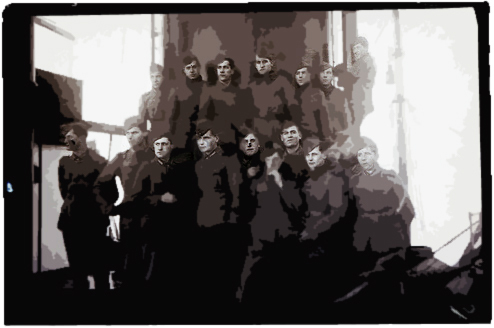
The Old Salt’s Corner
“Sailors Ghost”
How I long to see the sun and its morning light,
to warm my face from these long cold nights.
And hold you close and near,
to chase away all my fears.
But this my love I cannot do,
for my spirit walks along with you.
My ship hit the reef and sunk in the night,
my last thoughts were of holding you tight.
Until that day when we are united as one,
I will wait my love by the setting sun.
~ Joseph Sergi

“I’m Just Sayin”
“Everybody needs beauty as well as bread,
places to play in and pray in,
where nature may heal
and give strength to body and soul.”
“Of all the paths you take in life,
make sure a few of them are dirt.”
~ John Muir

“Thought for the Day”
“Never be afraid to raise your voice for honesty and truth
and compassion against injustice and lying and greed.
If people all over the world would do this,
it would change the earth.”
“You cannot swim for new horizons
until you have courage to lose sight of the shore.”
~ William Faulkner

“What I Learned”
“Faith is a journey, not a guilt trip.”
“For every action there is an equal and opposite government program.”
“Freedom comes at a cost hope is free.”
~ Anonymous

Second Hand News (Links to Articles from Week 12 - March 18, 2019 - March 24, 2019)
 Big problem facing the Green New Deal: A lack of power lines to deliver wind and solar
• House 'modernization': Pay raises and earmarks
• #GoodLuck: Odds stacked against Nunes in Twitter lawsuit
• 50 years after 74 sailors perished off Vietnam, Democrats and GOP in rare unity
• Republican shames Ilhan Omar: “SuperJew” CIA officer slain in Somalia died for you
Big problem facing the Green New Deal: A lack of power lines to deliver wind and solar
• House 'modernization': Pay raises and earmarks
• #GoodLuck: Odds stacked against Nunes in Twitter lawsuit
• 50 years after 74 sailors perished off Vietnam, Democrats and GOP in rare unity
• Republican shames Ilhan Omar: “SuperJew” CIA officer slain in Somalia died for you
Editor's Picks:
Pentagon finds $12.8 billion for Trump's border wall
• Mark Meadows: Coming release of documents will “show” U.S. ambassadors conspired with the FBI and the Justice Department to take down Trump
• Supreme Court sides with Trump on detention of immigrants
• Facebook blocks Trump’s social media chief: 'Why are you silencing me?'
• Lisa Page - Peter Strzok: Clinton, DOJ struck deal that blocked FBI access to Clinton Foundation emails on her private server
Washington Examiner
 REVEALED: Reuters reporter struck deal that allowed Beto O'Rourke to keep his Cult of the Dead Cow computer hacking a secret until AFTER his bid to unseat Ted Cruz
• First six bodies of Christchurch massacre victims are released for burial as coroner warns only 12 of the 50 people killed have been formally identified
• Turkey's president warns of a new Gallipoli in the wake of Christchurch terror attack and says anyone who targets Muslims in his country will return 'in coffins'
REVEALED: Reuters reporter struck deal that allowed Beto O'Rourke to keep his Cult of the Dead Cow computer hacking a secret until AFTER his bid to unseat Ted Cruz
• First six bodies of Christchurch massacre victims are released for burial as coroner warns only 12 of the 50 people killed have been formally identified
• Turkey's president warns of a new Gallipoli in the wake of Christchurch terror attack and says anyone who targets Muslims in his country will return 'in coffins'
Elizabeth Warren calls for the Electoral College to be scrapped, urges Mississippi to remove Confederate symbol from its flag and backs 'national conversation' on reparations at 2020 town hall event
• Norway 'has electronic proof' that Russia jammed GPS signals between NATO troops during huge war games
• The hunt for 'iron volcanoes' on a metal world: NASA mission targets space rock the size of Massachusetts thought to be the core of a dead planet
Daily Mail UK
 China’s ‘zero tolerance’ behind grounding troubled Boeing 737 Max 8
• Dutch police hunt gunman after tram shooting kills one, wounds several
• China’s multibillion-dollar plan to topple U.S. in fastest supercomputer race
• New Zealand gun reforms to come in 10 days, says Ardern after terror attack
• Signalling system blamed for MTR collision also used in Singapore crash
South China Morning Post
China’s ‘zero tolerance’ behind grounding troubled Boeing 737 Max 8
• Dutch police hunt gunman after tram shooting kills one, wounds several
• China’s multibillion-dollar plan to topple U.S. in fastest supercomputer race
• New Zealand gun reforms to come in 10 days, says Ardern after terror attack
• Signalling system blamed for MTR collision also used in Singapore crash
South China Morning Post
 The Japanese Air Force Needs an Upgrade (Faced with China’s increasing aggression, Japan must invest in fifth-generation fighter jets to deter Beijing’s expansion)
• The Inspiration for Terrorism in New Zealand Came From France
• China’s Economic Black Box
• India's Prime Minister Narendra Modi’s Bullet Train Dreams Are Hitting Rural Roadblocks
The Japanese Air Force Needs an Upgrade (Faced with China’s increasing aggression, Japan must invest in fifth-generation fighter jets to deter Beijing’s expansion)
• The Inspiration for Terrorism in New Zealand Came From France
• China’s Economic Black Box
• India's Prime Minister Narendra Modi’s Bullet Train Dreams Are Hitting Rural Roadblocks
Russia’s Next Land Grab Won’t Be in an Ex-Soviet State. It Will Be in Europe.
• How the 737 Max Series Went Wheels Down All Over the World
• How the Christchurch Shooter Played the World’s Media
• The Dark Web Enabled the Christchurch Killer
Foreign Policy
 CORRUPTION CHRONICLES: Court Victory Against Deep State FBI
• Courts slamming the FBI on Strzok docs, the testimonies of Peter Strzok & Lisa Page, & Judicial Watch questioning a Clinton email scandal witness
• Judicial Watch Victory: Federal Court Rules FBI’s Search of Records about Peter Strzok’s Removal from Mueller Investigation Ina
CORRUPTION CHRONICLES: Court Victory Against Deep State FBI
• Courts slamming the FBI on Strzok docs, the testimonies of Peter Strzok & Lisa Page, & Judicial Watch questioning a Clinton email scandal witness
• Judicial Watch Victory: Federal Court Rules FBI’s Search of Records about Peter Strzok’s Removal from Mueller Investigation Ina
How Donald Trump was Targeted by the FBI
• Illegal Alien Who Used Fake Fed Doc to Get License Committed No Crime, Obama Judge Rules
• Sunshine Week, Stormy Weather
• Judicial Watch White Paper Makes Case to Designate Mexican Cartels as Foreign Terrorist Organizations
• Wasteful Spending in Midst of $22 Trillion National Debt—Mariachi Training, Soviet Wine Study
Judicial Watch

Mr. Answer Man Please Tell Us: What Is Static Electricity?
Walking across the carpet, you reach for the doorknob and...OUCH!! You get a static shock.
What is happening? And why is there so much more static during the winter?
To understand static electricity, we have to learn a little bit about the nature of matter. Or in other words, what is everything made of?

Everything Is Made Of Atoms
Imagine a pure gold ring. Divide it in half and give one of the halves away. Keep dividing and dividing and dividing. Soon you will have a piece so small you will not be able to see it without a microscope. It may be very, very small, but it is still a piece of gold.
If you could keep dividing it into smaller and smaller pieces, you would finally get to the smallest piece of gold possible. It is called an atom. If you divided it into smaller pieces, it would no longer be gold.
Everything around us is made of atoms and scientists so far know of 118 different kinds. These different kinds of atoms are called "elements." There are 98 elements that exist naturally (although some are only found in very small amounts). Four of these 118 elements have reportedly been discovered, but have not yet been confirmed.
Atoms join together in many different combinations to form molecules, and create all of the materials you see around you.
Parts Of An Atom
So what are atoms made of? In the middle of each atom is a "nucleus." The nucleus contains two kinds of tiny particles, called protons and neutrons. Orbiting around the nucleus are even smaller particles called electrons. The 115 kinds of atoms are different from each other because they have different numbers of protons, neutrons and electrons.
It is useful to think of a model of the atom as similar to the solar system. The nucleus is in the center of the atom, like the sun in the center of the solar system. The electrons orbit around the nucleus like the planets around the sun.
Just like in the solar system, the nucleus is large compared to the electrons. The atom is mostly empty space. And the electrons are very far away from the nucleus. While this model is not completely accurate, we can use it to help us understand static electricity.

Electrical Charges
Protons, neutrons and electrons are very different from each other. They have their own properties, or characteristics. One of these properties is called an electrical charge. Protons have what we call a “positive” (+) charge. Electrons have a “negative” (-) charge. Neutrons have no charge, they are neutral.
The charge of one proton is equal in strength to the charge of one electron. When the number of protons in an atom equals the number of electrons, the atom itself has no overall charge, it is neutral.
Electrons Can Move
The protons and neutrons in the nucleus are held together very tightly. Normally the nucleus does not change. But some of the outer electrons are held very loosely. They can move from one atom to another.
An atom that loses electrons has more positive charges (protons) than negative charges (electrons). It is positively charged. An atom that gains electrons has more negative than positive particles. It has a negative charge. A charged atom is called an “ion”.
Some materials hold their electrons very tightly. Electrons do not move through them very well. These things are called insulators. Plastic, cloth, glass and dry air are good insulators. Other materials have some loosely held electrons, which move through them very easily. These are called conductors. Most metals are good conductors.
How can we move electrons from one place to another? One very common way is to rub two objects together. If they are made of different materials, and are both insulators, electrons may be transferred (or moved) from one to the other. The more rubbing, the more electrons move, and the larger the static charge that builds up. (Scientists believe that it is not the rubbing or friction that causes electrons to move. It is simply the contact between two different materials. Rubbing just increases the contact area between them.)

Opposites Attract
Now, positive and negative charges behave in interesting ways. Did you ever hear the saying that opposites attract? Well, it's true. Two things with opposite, or different charges (a positive and a negative) will attract, or pull towards each other. Things with the same charge (two positives or two negatives) will repel, or push away from each other.
A charged object will also attract something that is neutral. Think about how you can make a balloon stick to the wall.
If you charge a balloon by rubbing it on your hair, it picks up extra electrons and has a negative charge. Holding it near a neutral object will make the charges in that object move.
If it is a conductor, many electrons move easily to the other side, as far from the balloon as possible.
If it is an insulator, the electrons in the atoms and molecules can only move very slightly to one side, away from the balloon.
In either case, there are more positive charges closer to the negative balloon.
Opposites attract. The balloon sticks. (At least until the electrons on the balloon slowly leak off.) It works the same way for neutral and positively charged objects.
So how does this explain static shocks? Or static electricity in your hair?
When you take off your wool hat, it rubs against your hair. Electrons move from your hair to the hat. This builds up a negative static charge on the hat, and a postive charge on your hair.
Remember, things with the same charge repel each other. So the hairs, each with a positive charge, try to move as far from each other as possible. The result is that “fly-away look” as the hairs each push away from all the others. And that is how static electricity causes a bad hair day!
Where Do the Electrons Go?
When we rub two different materials together, which becomes positively charged and which becomes negative? Scientists have ranked materials in order of their ability to hold onto or give up electrons.
Library of Science.gov
• Live Science
• Science Made Simple
• Wikipedia
• What Is Static Electricity? (YouTube Search) 

NAVSPEAK aka U.S. Navy Slang
Cadillac: A mop bucket, usually with wheels and a wringer. See also “Swab”.
CAG: Title used when addressing the carrier air wing commander. It is a holdover from the days when air wings were called air groups and stood for Commander Air Group. Can also refer to the air wing itself, as in CAG-1, CAG-5 or CAG-14. See “air wing”.
Cal PO: Calibration Petty Officer: Collateral duty position, typically filled by the most junior and inept sailor in a division, responsible for ensuring a division's test equipment is delivered to the cal lab on time.
Carl Prison: “America's Favorite Carrier”, the USS Carl Vinson (CVN-70).
Captain's Asshole: The XO. In general, the CO makes policy, the XO enforces it, hence the name.
CASREP: Casualty Report: Report to higher authority something which is inoperative, OOC (out of commission), and the impact on readiness. Often jocularly applied to broken minor items not requiring any report, or to personnel who are on the binnacle list. Also applied to those who have been killed.
CAVU: Ceiling and Visibility Unlimited: Perfect flying weather.
CF (pronounced Charlie Foxtrot): Clusterfuck.
C-GU11 (pronounced “See-Gee-You-Eleven”): Seagull. Similar to the code for “bulkhead remover”. A common joke is to ask inexperienced personnel on watch to “keep an eye out for signs of C-GU11s in the area, over”. Sometimes spelled C-6U11, Z-6UL1 or various 1337-like combinations.

Just for you MARINE
C & S: “Clean & Sober” notation formerly entered on the liberty list beside the names of Marines returning from liberty in that condition.
CACO: Casualty Assistance Calls/Counseling Officer, a Marine detailed to help the family of a Marine killed, wounded, or captured in the line of duty.
Cadillacs: Boots; method of transportation when no other vehicle is available. Also refers to all leather combat boots.
Call Out To challenge, often by announcing incriminating information about a person. See also drop a dime.

Naval Aviation Squadron Nicknames
Fleet Air Reconnaissance Squadron 4 (VQ-4) - nicknamed the “Shadows”
United States Navy - Fleet Air Reconnaissance, Tinker Air Force Base, Oklahoma - Established July 1, 1968.

Where Did That Saying Come From?

“In stitches:” Meaning: Laughing uproariously.
History: To be in stitches is to be in such a paroxysm of laughter as to be in physical pain. The allusion implicit in the phrase is to that of a sharp pain - like being pricked with a needle.
MARIA:
“If you desire the spleen, and will laugh yourself into stitches, follow me. Yond gull Malvolio is turned heathen, a very renegado; for there is no Christian, that means to be saved by believing rightly, can ever believe such impossible passages of grossness. He's in yellow stockings.”
Despite the usage in Shakespeare, the phrase didn't become established in the language and there are no other records of it until the 20th century. This entry in The Lowell Sun, in July 1914, is the earliest non-Shakespearian record that I can find:
“There's a new face among the members in Ben Loring, a natural-born comedian, who seems to have no difficulty whatever in keeping his audience in stitches of laughter and glee.”
Phrases.org UK

Science & Technology

Watch All Five of the U.S. Military’s Fighter Jets Fly in Formation
• THC Could Affect Men's Sperm, New Study Says
• How Scientists at Degree Men Test Antiperspirant
• Milwaukee Adds Geofencing To Track Your Tools
• Amazon Alexa Sends Man 1,700 Recordings From a Stranger's House
• The Air Force’s Next Great Fighter Jet Could Cost $300 Million Apiece
Popular Mechanics

Bizarre News (we couldn’t make up stuff this good – real news story)

A French Teenager Turned the Bible and Quran into DNA and Injected Them into His Body
A kid in France transcribed parts of the Hebrew book of Genesis and the Arabic-language Quran, into DNA and injected them into his body - one text into each thigh.
Adrien Locatelli, a 16-year-old high school student, posted a paper on the preprint server OS, in which he claimed, “It is the first time that someone injects himself macromolecules developed from a text.”

Locatelli, a student at the boarding school Lycée les Eaux Claires in Grenoble, France, told that he didn’t need any special equipment for his project. [10 Amazing Things Scientists Have Done with CRISPR]
“I just needed to buy saline solution and a syringe because VectorBuilder sent me liquid and ProteoGenix sent me powder.”
VectorBuilder is a company that creates viruses that can sneak DNA strands into cells for gene-editing purposes. ProteoGenix synthesizes, among other things, custom strands of DNA. Both companies primarily serve scientists, but their products are available to anyone who purchases them.
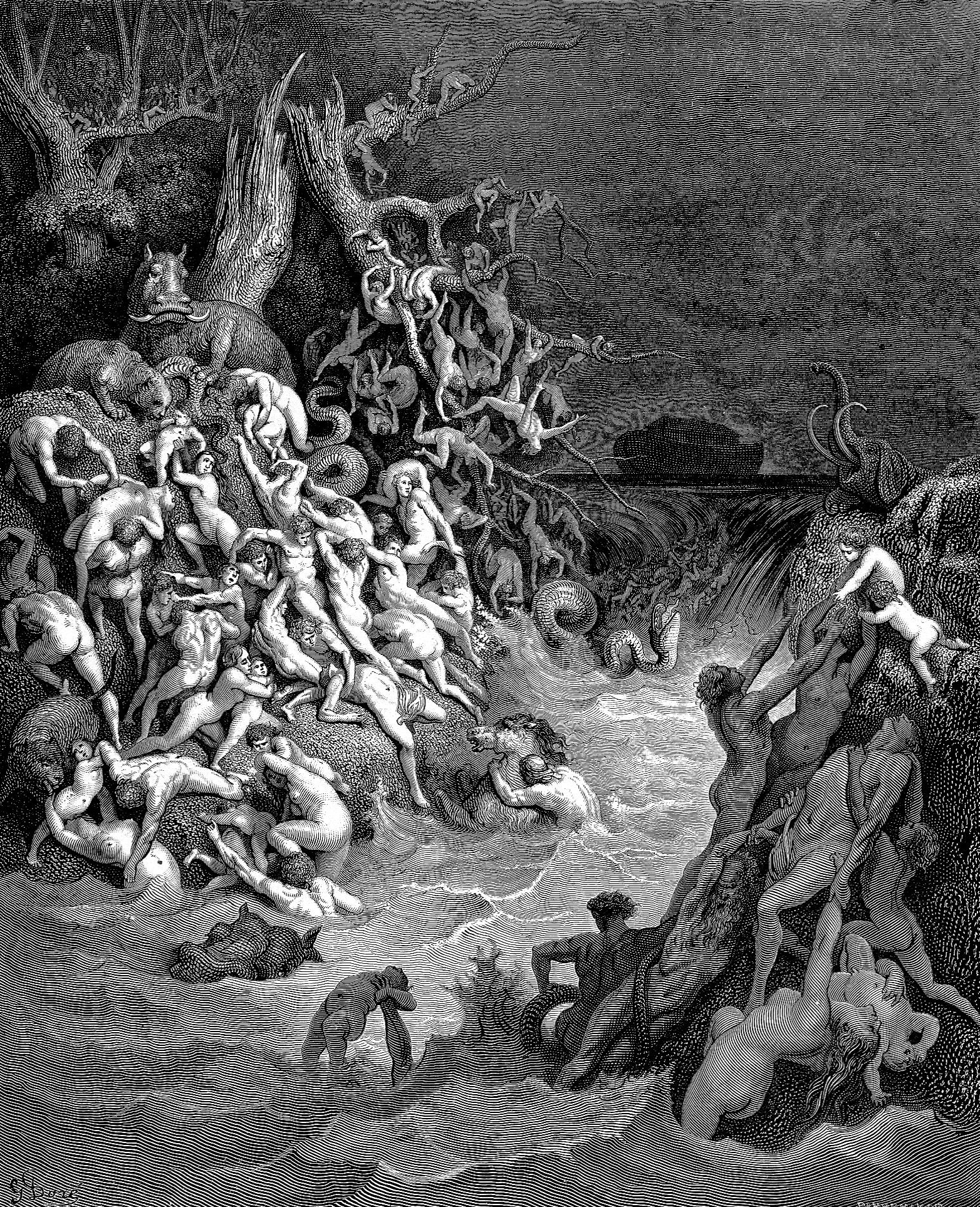
If you saw the texts that Locatelli injected into his body, they wouldn’t look like much. DNA is just a long molecule that can store information. Mostly, it stores the information living things use to go about their business. But it can be used to store just about any kind of information that can be written down.
Locatelli’s method for translating the texts into DNA was straightforward, if a bit crude. DNA encodes its information using repeating strings of four nucleotides, which scientists have abbreviated as A, G, T and C. Locatelli lined up each letter of the Hebrew and Arabic alphabets (which correspond closely to each other) with a nucleotide, so each nucleotide represented more than one letter. So if you were to write a Hebrew sentence using his scheme, every aleph, vav, yud, nun, tsade, and tav would become a G. Every dalet, khet, ayin, and resh would become a T. And so on.
“I did this experiment for the symbol of peace between religions and scienc”e, ... “I think that for a religious person it can be good to inject himself his religious text”
Locatelli said he didn’t experience any significant health problems following the procedure, though he reported some “minor inflammation” around the injection site on his left thigh for a few days.
[The injected texts] are unlikely to do anything except possibly cause an allergic reaction. I also don't know how likely the rAAV vector would be to make actual virus, given the way he injected. I honestly don't know enough about the vector he used and how he did it (details are scarce)”, Sriram Kosuri, a professor of biochemistry at UCLA wrote in a message.
Live Science (12/12/2018) 


SONG FACTS
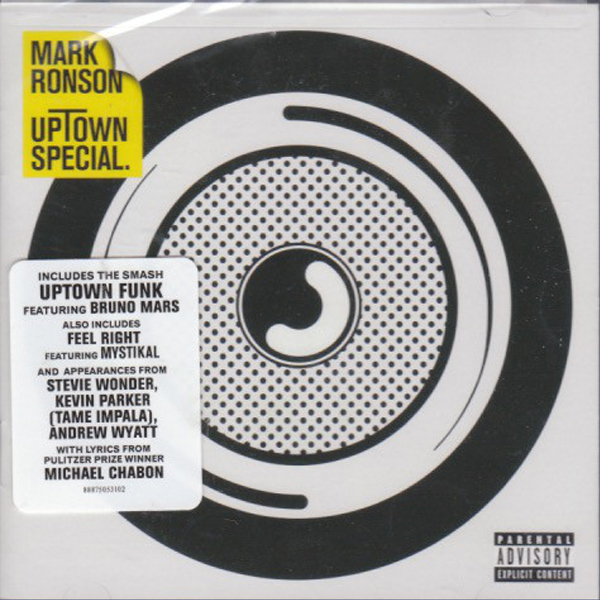
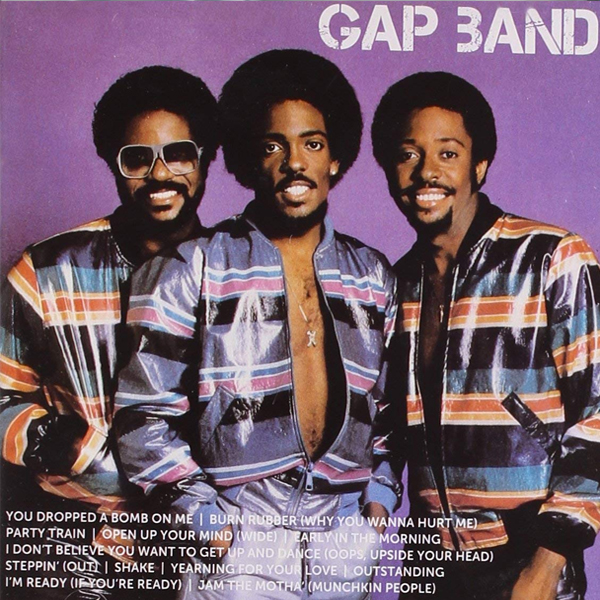
“Uptown Funk” - Mark Ronson (featuring Bruno Mars)
Album: Uptown Special
Released 2014 
Famous Cases of Alleged Music Plagiarism
“Uptown Funk” by Mark Ronson (featuring Bruno Mars) (2014)
vs.
“Oops Upside Your Head” by the Gap Band (1979), “Funk You Up” by the Sequence (1979), “More Bounce to the Ounce” by Zapp (1980), “Young Girls” by Collage (1983)
Mark Ronson “Uptown Funk” 
Written by Mark Ronson, Bruno Mars - (sung by Mark Ronson, Bruno Mars (2014)
The Gap Band “Oops Upside Your Head” (1979)  The Sequence “Funk You Up” (1979)
The Sequence “Funk You Up” (1979)  Zapp “More Bounce to the Ounce” (1980)
Zapp “More Bounce to the Ounce” (1980)  Collage “Young Girls” (1983)
Collage “Young Girls” (1983) 
Nothing really comes from scratch anymore, and music is no exception. The first thing bands talk about when they form are their influences, and they typically start off by (and never really stop) playing other people’s music.
Entire genres, like folk, blues, and hip-hop, are based upon liberal borrowing out of either tradition or necessity. Simply put, every artist you love, no matter how unique, innovative, and game changing they may be, stands on the proverbial shoulders of giants.
With that in mind, famous instances of alleged music plagiarism. Some cases went to court. Others got shrugged off. Sometimes we think we’re listening to the same song twice. Other times we just don’t hear it that way.
The Case: The release of Mark Ronson’s retro-tinged Bruno Mars vehicle in November 2014 signaled the start of a legal pile-on that continues to this day. The track’s co-composers - Ronson, Jeff Bhasker, Philip Lawrence and Peter Hernandez - acknowledged their debt to earlier work by offering credit to Trinidad James’ 2012 rap hit “All Gold Everything” prior to issuing the song, but that did little to stem the tide of legal briefs. By February 2015, Seventies funk heroes the Gap Band had filed a claim through Minder Music alleging copyright infringement on their 1979 track “Oops Upside Your Head.” The band’s co-founder, Charlie Wilson, fired a warning shot during an interview with WBLS in New York that spring, saying, “The musicologist came back and said it was ‘Oops Upside The Head’ and now they have to pay.”
Pioneering female rap trio The Sequence leveled accusations of their own in early 2016, citing their 1979 Sugar Hill Records single “Funk You Up”, from which they claimed Ronson & Co. borrowed “significant and substantially similar compositional elements” from the song’s hook. “Bruno Mars took the lyrics, the cadence and the melodies, and then they went and reached over to ‘Apache’ [the indelible 1981 Sugarhill Gang jam] and got ‘Jump on it/Jump on it,'” band member Angie Stone told Rolling Stone in 2017. “I’m like, OK, now y’all done did too much. We’re broke over here, OK? We need some money. We need some of that, because we created that!”
Also in 2016, Minneapolis electro-funk collective Collage charged the writers of “Uptown Funk” with coopting “the main instrumental attributes and themes” of their 1983 song, “Young Girl”. The resulting lawsuit sought unspecified damages and profits. Most recently, R&B collective Zapp filed a suit in New York’s U.S. District Court in September 2017, alleging that their 1980 proto-synth groove “More Bounce to the Ounce” is a crucial component to Ronson and Mars’ funky gumbo. According to a copy of the suit obtained by Billboard, the band’s publishing company is seeking damages of up to $150,000 per infringement, a permanent injunction against profiting from the alleged infringement, and a jury trial.
The Verdict: While the majority of cases against Ronson for “Uptown Funk” are still pending, matters with The Gap Band were resolved out of court in the spring of 2015. Four Gap Band members - Charlie, Robert and Ronnie Wilson and Rudolph Taylor - as well as their producer, Lonnie Simmons, all received writing credits, earning them each 3.4 percent of the song.
Why It Matters: While speaking at a TED Talk in the spring of 2014, Ronson provided some insight into his creative process by noting that sampling was akin to riffing on blues progressions. “If you … copy without making it a carbon copy”, he told the audience, “it is original”. This belief, a common one among star producers, may be subject to change after the legal mayhem that greeted the initial success of “Uptown Funk”. Given that the song spent 14 weeks sitting at the top of Billboard and became the second best-selling digital single of all time, the cases against it represent perhaps the most high-profile takedown of a hit in the modern post-sampling era.
The first single from “Uptown Special”, this exuberant track features vocals and co-writing credits by Bruno Mars and was produced by Jeff Bhasker (Kanye West, Drake, Alicia Keys). The same trio previously collaborated on Mars' hit tune “Locked Out of Heaven”  .
.
The song originated from a lick that Mars and his band were playing on tour. “When we hit on that opening line - 'This s--t, that ice cold. Michelle Pfeiffer, that white gold' - we knew that we had the seed of this really exciting idea”, Ronson told Billboard magazine. “I pushed myself much more than I have on anything else in the past.”
The song took over a half a year to complete as Ronson spent a lot of time traveling across the States as he tried to pin Mars down. “It was six or seven months of chasing Bruno around on tour”, he said.
The pressure got to Ronson as he struggled to lay down his guitar part before producer Jeff Bhasker left at the end of the day for another project. “The plan was for me to record my guitar part by lunch. Lunchtime comes around and I still haven't nailed the part”, he recalled to Billboard. “We go out and in the stress of finishing this song I fainted in the restaurant. I threw up three times. Jeff had to carry me back to the studio.” In the end, they got it - “on take 82.”
Mars and Ronson create a monster party vibe in this song, starting with the title: “Uptown” implies high class, while “funk” is the rhythm and release. The lyrics are way over-the-top, with Mars explaining that he's so hot he's forcing dragons into retirement. It's clever, fun and outrageous, but also meticulously constructed with a mix of rhyming patterns. For instance:
“Stop wait a minute
Fill my cup put some liquor in it”
“Minute” and “liquor-in-it” aren't typical rhymes, but you can get away with it if you have the funk on your side.
Another example:
“Ride to Harlem, Hollywood, Jackson Mississippi
If we show up we gonna show out
Smoother than a fresh jar of Skippy”
In this case, “Mississippi” and “Skippy” sandwich (get it?) a line that doesn't rhyme with any others. In that line, however, “show” is repeated twice, creating an inline rhyme
The lyrics all sound like they're improvised after a few libations, but every syllable has a place in the rhythm.
Mars and Ronson performed this song for the first time when they were musical guests on the November 22, 2014 episode of Saturday Night Live.
The song's music video was filmed by frequent Bruno Mars' director Cameron Duddy. The clip stars Ronson, Mars and the Hawaiian singer's backing band, The Hooligans. It was shot in various cities where Mars was touring as well as the 20th Century Fox New York street backlot in Los Angeles.
“Uptown Funk” spent the most time (21 weeks) in the Hot 100's top three of any song. The record was previously held by Santana's “Smooth”  with 19 weeks.
with 19 weeks.
Mark Ronson, official website / Rolling Stone / COS /
Billboard / All Music / Song Facts / Mark Ronson
Image: “Uptown Special (album)” by Mark Ronson

Trivia
● When, according to legend, a Trojan Horse was used to help win a war, which two armies were fighting, and what is the current name for the country where this war occurred?
Answer to Trivia
● The highest point in the U.S. east of the Mississippi River is called Mt. Mitchell, elevation 6700 feet, and is found in which state? is it New Hampshire, Vermont, or North Carolina.
Answer to Trivia
● In 1492, the Spanish expelled all Jews from Spain, and also rescued the country from Moslem control. What was the last city in Spain controlled by the Moslems?
Answer to Trivia
● Three kinds of acids: a. Aspirin is known as what kind of acid? b. Vitamin C is known as what kind of acid? c. LSD is known as what kind of acid?”
Answer to Trivia

A Test for People Who Know Everything
From the Jeopardy Archives Category - “THE HUMAN BODY” ($200)
“The radius, ulna & humerus all converge at this joint.”
● Answer for People Who Do Not Know Everything, or Want to Verify Their Answer Wikipedia.org
From the Jeopardy Archives Category - “THE HUMAN BODY” ($600)
“The strongest tendon in the body, it's named for the king of the Myrmidons.”
● Answer for People Who Do Not Know Everything, or Want to Verify Their Answer MebMD
From the Jeopardy Archives Category - “THE HUMAN BODY” ($1,000)
“The meninges are membranous envelopes whose job is to protect both the brain & this.”
● Answer for People Who Do Not Know Everything, or Want to Verify Their Answer Encyclopedia Britannica
Answer to Last Week's Test
From the Jeopardy Archives Category - “FULL OF QUESTIONS” ($400)
“When it comes to a tough decision, you might ask this popular question abbreviated WWJD.”
● Answer: “What would Jesus do?” MIT
From the Jeopardy Archives Category - “FULL OF QUESTIONS” ($800/DD)
“'Where's my serpent of old Nile?' is a line from this Shakespeare play.”
● Answer: Antony and Cleopatra. Quora
From the Jeopardy Archives Category - “FULL OF QUESTIONS” ($1,000)
“We applaud you if you know this Zen question about a certain extremity & the noise it may or may not make.”
● Answer: What is a tree?, What is the sound of one hand clapping?. Quora

Joke of the Day
“A Lesson in Government”

A Lesson in Government
A teacher was teaching her second grade class about the government, so for homework that one day, she told her her students to ask their parents what the government is.
When Little Johnny got home that day, he went up to his dad and ask his what the government was.
His dad thought for a while and answered, “Look at it this way: I'm the president, your mom is Congress, your maid is the work force, you are the people and your baby brother is the future.”
“I still don't get it” responded the Little Johnny.
“Why don't you sleep on it then? Maybe you'll understand it better”, said the dad.
“Okay then...good night” said Little Johnny went off to bed.
In the middle of the night, Little Johnny was awakened by his baby brother's crying. He went to his baby brother's crib and found that his baby brother had taken a poop in his diaper.
So Little Johnny went to his parent's room to get help. When he got to his parent's bedroom, he looked through the keyhole to check if his parents were asleep. Through the keyhole he saw his mom loudly snoring, but his dad wasn't there.
So he went to the maid's room. When he looked through the maid's room keyhole, he saw his dad having sex with his maid.
Little Johnny was surprised, but then he just realized something and thinks aloud,
“OH!! Now I understand the government! The President is screwing the work force, Congress is fast asleep, nobody cares about the people, and the future is full of s**t!'”






































